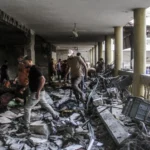Singapore’s Electoral Map Redrawn with Major Changes
Singapore’s electoral map has undergone significant changes following the announcement by the Electoral Boundaries Review Committee (EBRC) on 11 March. The EBRC revealed that out of the total 31 constituencies, only five Group Representation Constituencies (GRCs) and four Single Member Constituencies (SMCs) remain unchanged from the previous election. This results in an increase in the number of constituencies to 33, with the addition of three new GRCs and six new SMCs.
Expansion of Constituencies
The restructuring has led to the creation of a total of 18 GRCs, including the establishment of five new ones. Notably, the Aljunied GRC, which has been held by the opposition since 2011, has been redrawn for the first time in a decade.
Implications of the Changes
The reconfiguration of electoral boundaries has sparked discussions about the potential impact on the upcoming elections. With the introduction of new constituencies and the realignment of existing ones, political parties will need to strategize and adapt to the changes in order to secure electoral success.
Government’s Justification
The government has justified the need for these changes as a means to ensure fair and effective representation for all citizens. By adjusting the boundaries based on population growth and demographic shifts, the aim is to maintain a balance in the distribution of voters across constituencies.
Response from Opposition
Opposition parties have raised concerns about the timing of the electoral boundary changes, suggesting that it may have been influenced by political considerations. Some critics argue that the redrawing of boundaries could potentially disadvantage opposition candidates by altering the composition of constituencies in favor of the ruling party.
Public Reaction
The public response to the revised electoral map has been mixed, with some expressing support for the government’s efforts to ensure equitable representation, while others question the motives behind the specific changes made. As Singapore prepares for the next election, the impact of the redrawn boundaries on voter behavior and political dynamics remains to be seen.
Conclusion
In conclusion, Singapore’s electoral landscape has been reshaped with the introduction of new GRCs and SMCs, signaling a shift in the political terrain. The implications of these changes will unfold in the lead-up to the election as parties navigate the revised boundaries and engage with voters in the revamped constituencies.
Source
This article is written in response to original article.







